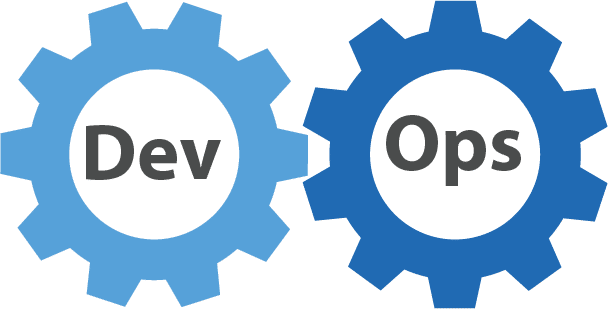
DevOps has become essential for businesses that want to remain competitive in the digital age. It brings together the development and operations teams to work together and create a more streamlined software development and deployment process. According to a 2020 DevOps trend survey, 99 percent of respondents said that DevOps positively impacted their business.
What is DevOps?
DevOps is important as it helps organizations deliver high-quality software products and services at a faster pace, with greater reliability and efficiency. Here are some key reasons why DevOps is important:
- Faster time-to-market: DevOps emphasizes collaboration and automation, which helps teams to work together more efficiently and deliver software faster.
- Increased agility: DevOps empowers organizations to swiftly adapt to evolving market demands, customer feedback, and emerging technologies, enabling them to maintain a competitive edge.
- Improved quality: Continuous testing and integration are key focuses of DevOps, as they enable teams to detect and resolve issues early on in the development process. This results in the creation of high-quality software products.
- Greater efficiency: One of the primary advantages of DevOps is its ability to automate numerous manual processes, including testing, deployment, and monitoring. Doing so minimizes the risk of human error and saves significant amounts of time.
- Better collaboration: DevOps breaks down silos between development, operations, and other teams, promoting greater collaboration, knowledge sharing, and accountability.
- Improved customer satisfaction: DevOps enables organizations to deliver software products and services that meet or exceed customer expectations, resulting in greater customer satisfaction and loyalty.
Overall, DevOps implementation is important because it helps organizations to build a culture of collaboration, continuous improvement, and innovation, which is essential for success in today’s fast-paced, technology-driven business environment.
Ten best practices for Successful DevOps Implementation
DevOps implementation requires clear goals
To successfully implement DevOps, it is essential to define your goals clearly. This will help you to understand what you want to achieve, how you want to achieve it, and what you need to do to achieve it. Your goals should be specific, measurable, achievable, relevant, and time-bound. You can use the SMART framework to define your goals.
Use appropriate tools
DevOps implementation steps require the use of several tools to automate the software development and deployment process. It is essential to choose the right tools that fit your business needs. Some of the popular tools used in DevOps include Git, Jenkins, Docker, Kubernetes, and Ansible.
Customer Validation
DevOps implementation is a team sport, and it requires collaboration between the development and operations teams. It is essential to foster a culture of collaboration to ensure that everyone is working together towards a common goal. This can be achieved by encouraging open communication, promoting cross-functional teams, and providing training and development opportunities.
Automate everything
DevOps implementation is all about automation. It is essential to automate everything that can be automated, including the build, testing, and deployment processes. This will help to speed up the software development and deployment process and reduce the risk of errors.
Implement Continuous Integration (CI) and Continuous Delivery (CD)
Continuous Integration (CI) and Continuous Delivery (CD) are two critical aspects of implementing DevOps. CI is the practice of regularly merging code changes into a central repository, while CD is the practice of automating the release of software changes to production. Implementing CI/CD will help to ensure that software changes are tested, integrated, and deployed quickly and reliably.
Monitor everything
Monitoring is an essential part of the DevOps implementation process. Monitoring every aspect of the software development and deployment process is essential to identify and address issues quickly. Monitoring should be done at every stage of the process, including development, testing, and production.
Implement security as a code
Security is a critical aspect of DevOps implementation. It is essential to implement security as a code to ensure that security is integrated into every aspect of the software development and deployment process. This can be achieved by implementing security testing, vulnerability scanning, and penetration testing.
Use Infrastructure as Code (IAC)
Infrastructure as Code (IAC) is the practice of managing and provisioning infrastructure using code. It allows for the automation of infrastructure provisioning, which helps to reduce the risk of errors and increase efficiency. Using IAC also makes it easier to scale infrastructure up or down as needed.
Foster a culture of experimentation
DevOps implementations is all about experimenting and learning from failures. It is essential to foster a culture of experimentation to encourage innovation and creativity. This can be achieved by providing a safe environment for experimentation, promoting collaboration, and recognizing and rewarding success.
DevOps implementation needs continuous improvement
DevOps is not a one-time implementation but a continuous process of improvement. It is essential to continuously improve the DevOps process to ensure that it meets the changing needs of the business. This can be achieved by monitoring performance metrics, soliciting feedback, and implementing continuous improvement practices.
Benefits of DevOps Implementation

Improved Collaboration and Communication:
- A study by Puppet revealed that organizations with strong DevOps practices have 46 times more frequent code deployments and 440 times faster lead time from commit to deploy.
- According to a DevOps.com report, 63% of organizations implementing DevOps experienced improved collaboration between development and operations teams.
Faster Time to Market:
- The State of DevOps Report 2020 by Puppet found that high-performing DevOps organizations deploy changes 208 times more frequently and recover from failures 2,604 times faster than their low-performing counterparts.
- Research by DORA (DevOps Research and Assessment) showed that elite DevOps organizations deploy software 208 times faster and have a lead time to deploy that is 106 times faster compared to low performers.

Increased Efficiency and Productivity:
- The Puppet State of DevOps Report 2020 indicated that high-performing DevOps teams spend 21% less time on unplanned work and rework, allowing them to focus on delivering value to customers.
- The same report showed that elite performers have 3 times lower change failure rates and 24 times faster recovery times from failures, leading to increased efficiency and productivity.
Enhanced Software Quality and Reliability:
- The DORA State of DevOps Report 2019 highlighted that high-performing DevOps organizations have 7 times lower change failure rates and recover 2,604 times faster from incidents compared to low performers.
- A survey conducted by Electric Cloud revealed that 74% of organizations saw an improvement in application quality after implementing DevOps practices.

Continuous Feedback and Iterative Improvement:
- According to a study by CA Technologies, organizations that implemented DevOps experienced a 19% increase in customer satisfaction.
- The DORA State of DevOps Report 2019 found that elite DevOps performers spend 50% less time remediating security issues and are able to apply security patches 2,604 times faster than low performers.
Also check: Cybersecurity And Cloud Computing: Risks & Best Practices
Bottom line
DevOps is a critical practice for businesses that want to remain competitive in the digital age. By implementing the ten best practices outlined in this article, you can ensure a successful implementation of DevOps and reap the benefits.
Frequently Asked Questions
Here are five best practices of DevOps in a concise format:
-
Continuous Integration and Continuous Deployment (CI/CD): Automate and streamline the software delivery process, enabling frequent and reliable releases.
-
Infrastructure as Code (IaC): Manage infrastructure through code, allowing for versioning, consistency, and scalability.
-
Collaboration and Communication: Foster a culture of collaboration and effective communication between development, operations, and other teams involved in the software lifecycle.
-
Monitoring and Logging: Implement robust monitoring and logging practices to gain insights into system performance, identify issues, and enable proactive problem-solving.
-
Automated Testing: Utilize automated testing techniques to ensure the quality and reliability of software, reducing manual effort and time required for testing.
These practices promote efficiency, agility, and quality in software development and deployment processes, aligning development and operations teams for successful DevOps implementation.
The 9 pillars of DevOps, also known as the CALMS model, include:
- Culture: Promoting collaboration, communication, and a shared responsibility mindset among teams.
- Automation: Automating repetitive tasks and processes to improve efficiency and consistency.
- Lean: Applying lean principles to eliminate waste, reduce delays, and optimize workflows.
- Measurement: Collecting and analyzing data to measure performance, identify bottlenecks, and drive continuous improvement.
- Sharing: Encouraging knowledge sharing, cross-functional teams, and open communication channels.
- Continuous Integration: Integrating code changes frequently to ensure early detection of issues.
- Continuous Delivery: Automating the release process to deliver software updates more frequently and reliably.
- Continuous Deployment: Automatically deploying code changes into production environments after passing the necessary tests.
- Monitoring: Monitoring application and infrastructure health to proactively identify and resolve issues.
DevOps practices are best implemented by fostering collaboration and communication between development and operations teams. This involves integrating automated processes, continuous integration/continuous deployment (CI/CD) pipelines, and infrastructure as code (IaC) techniques. Emphasizing a culture of continuous improvement, feedback, and sharing responsibility for software delivery leads to efficient, reliable, and agile development practices.
To implement DevOps successfully, follow these key steps:
-
Cultural Shift: Foster a collaborative culture, emphasizing communication, shared responsibility, and continuous learning among development, operations, and other teams.
-
Automation: Automate processes for development, testing, deployment, and operations to improve efficiency, reduce errors, and enable frequent releases.
-
Continuous Integration and Deployment: Implement CI/CD pipelines to continuously integrate code changes, run tests, and deploy updates rapidly and reliably.
-
Monitoring and Feedback: Establish robust monitoring systems to gather real-time data on application performance, user experience, and infrastructure, enabling quick feedback and issue resolution.
-
Collaboration and Communication: Encourage cross-functional collaboration, transparent communication, and knowledge sharing across teams to enhance coordination and problem-solving.
-
Security Integration: Integrate security practices into the entire software development lifecycle to ensure secure code, vulnerability scanning, and compliance.
-
Continuous Improvement: Embrace a culture of continuous improvement by collecting feedback, conducting post-implementation reviews, and using metrics to identify areas for enhancement.
Remember, successful DevOps implementation requires a combination of technical, cultural, and process-oriented changes tailored to your organization’s specific needs and goals.
The six pillars of DevOps are as follows:
-
Culture: Promoting collaboration, communication, and shared responsibility among teams.
-
Automation: Using tools and technology to automate repetitive tasks, deployments, and infrastructure management.
-
Measurement: Collecting and analyzing metrics to gain insights into the software development and delivery process.
-
Sharing: Encouraging knowledge sharing and cross-functional collaboration to foster continuous learning and improvement.
-
Feedback: Establishing feedback loops to gather input from stakeholders, users, and metrics for continuous improvement.
-
Collaboration: Promoting collaboration and breaking down silos between development, operations, and other teams involved in the software lifecycle.












